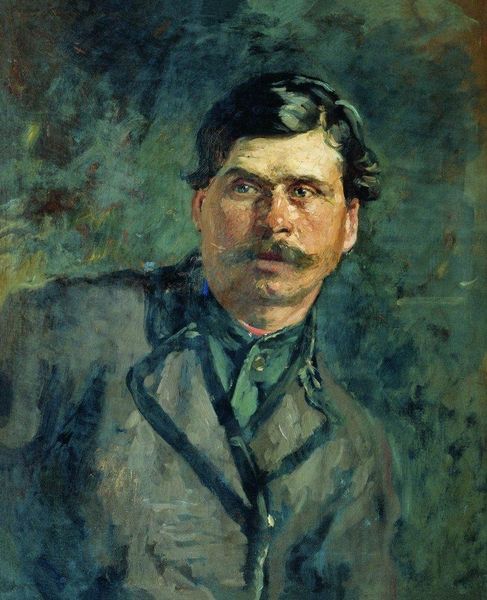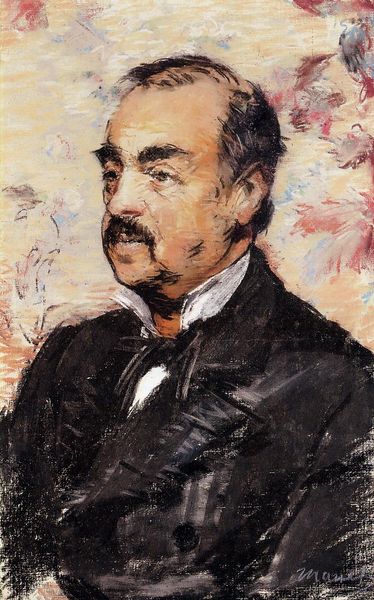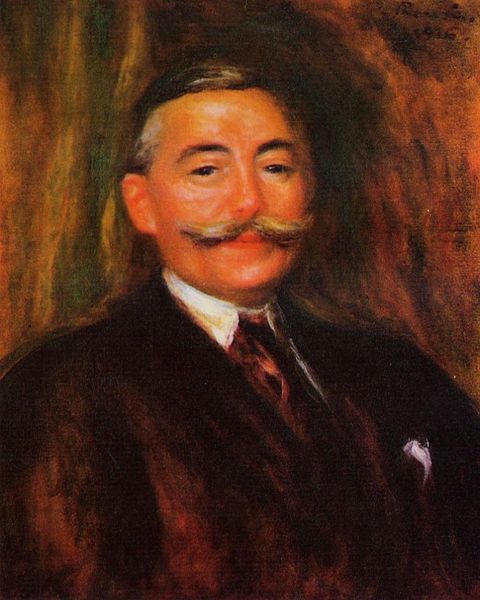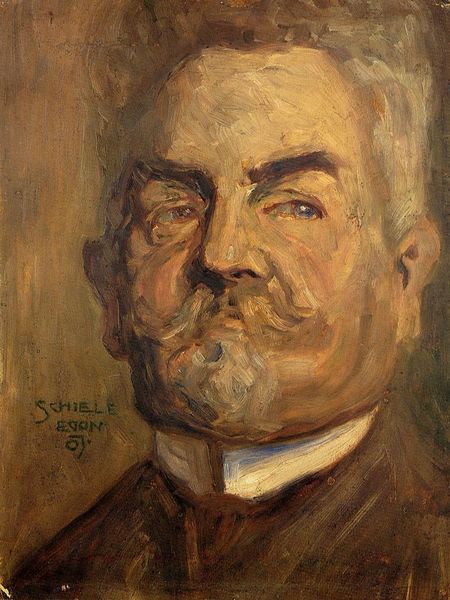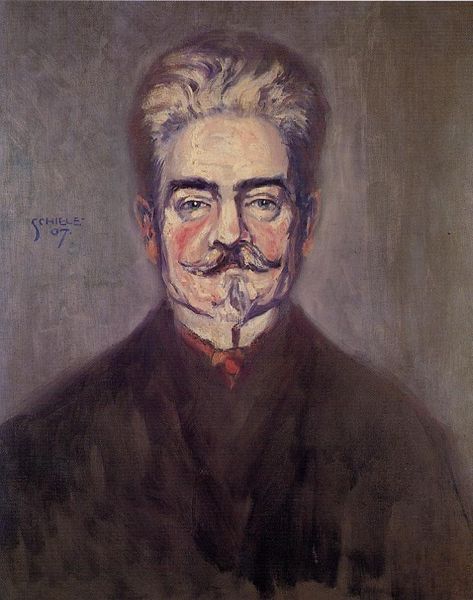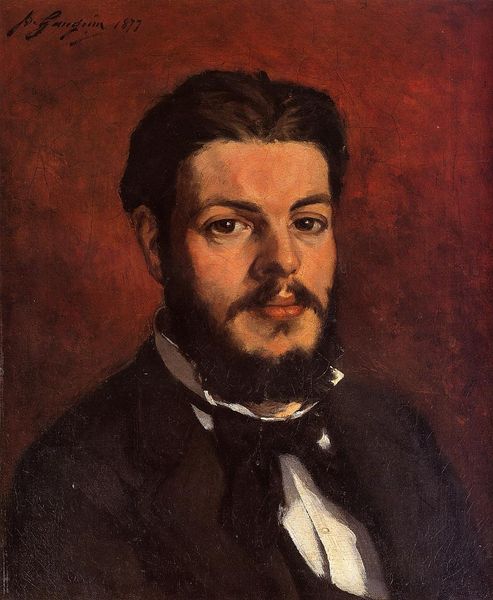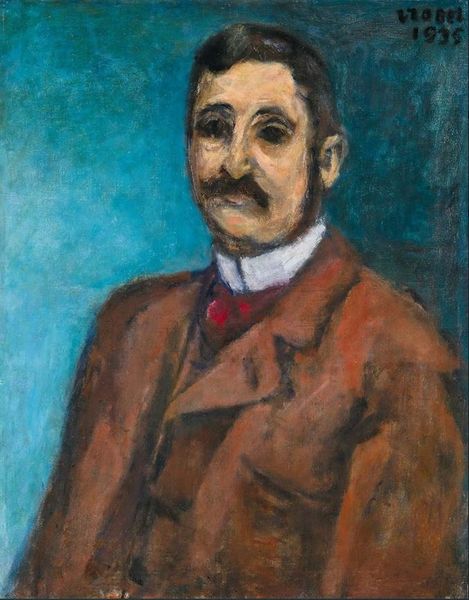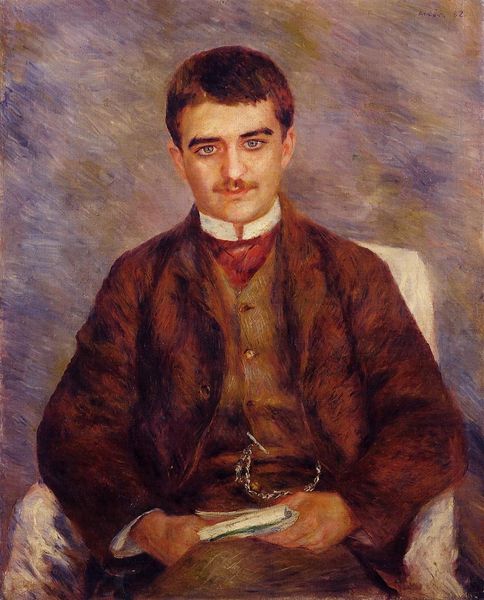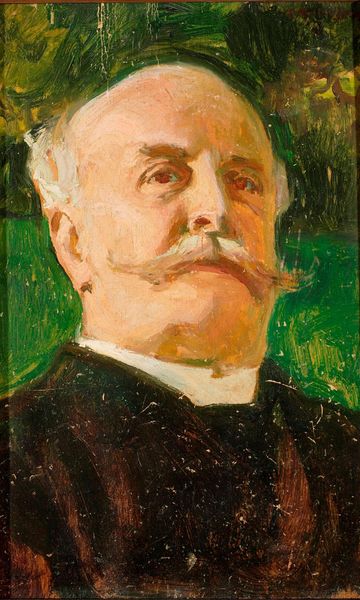
Copyright: Public domain
Editor: Here we have Pierre-Auguste Renoir’s 1910 oil on canvas painting, "Wilhelm Muhlfeld." It’s striking how solid the figure feels despite the loose brushwork typical of Impressionism. What social dynamics do you see playing out in this piece? Curator: Beyond the masterful brushstrokes, consider what it meant for Renoir, a celebrated figure of the French Impressionist movement, to portray Muhlfeld, a German art critic and, importantly, someone involved in the business side of art. Think about how the art world operated then – the complex power structures between artists, critics, and the market. Who held the keys to recognition and success? Editor: That’s fascinating! I hadn't considered the power dynamics. The gaze of the subject seems very direct and engaged with the viewer, does this have something to do with the narrative? Curator: Absolutely. Muhlfeld's direct gaze invites us to consider his position, not merely as the subject, but also as a participant in constructing artistic value. Were Renoir and Muhlfeld perhaps engaged in a subtle commentary on artistic recognition? Think of the dynamic: the artist immortalizing the critic, maybe even seeking favorable reviews or patronage. Editor: So it’s not just a portrait, but almost a negotiation, or at least a dialogue, captured on canvas. It also feels very relevant in our times of curators and museums. Curator: Precisely. Recognizing that the art world involves multiple viewpoints helps in our critical thinking skills. By understanding art as an intersectional narrative, and by constantly posing pertinent questions we expand the experience with the artwork and create meaningful dialogue and hopefully enact societal changes in attitudes and values.
Comments
No comments
Be the first to comment and join the conversation on the ultimate creative platform.
